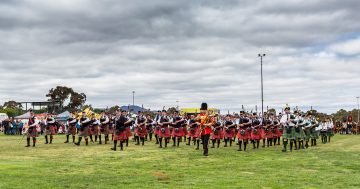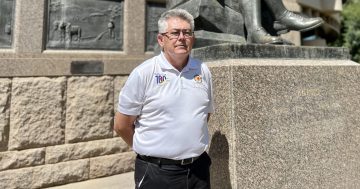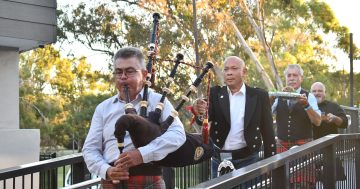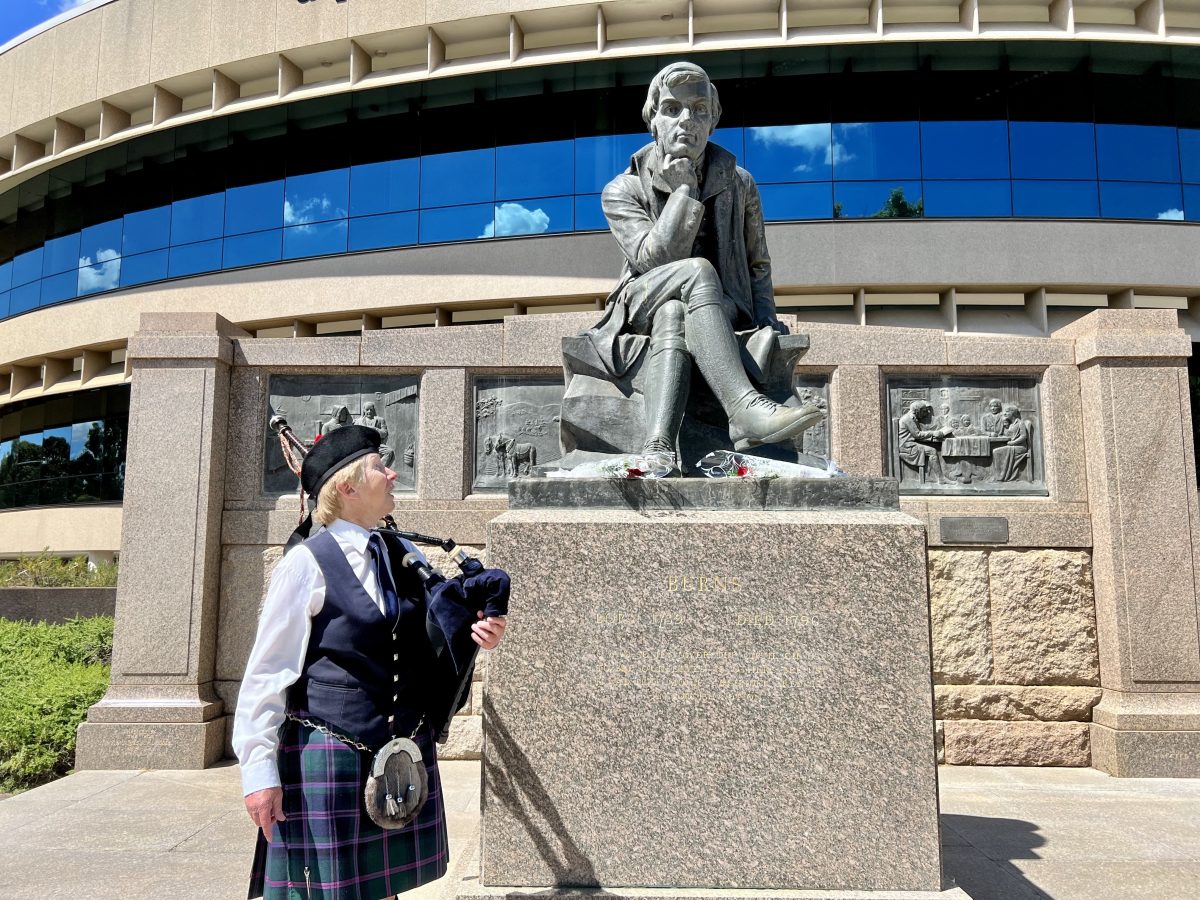
Looking up to famous Scottish poet Robert Burns on the corner of National Circuit and Canberra Avenue, Forrest. Photo: James Coleman.
“O, wad some power the giftie give us, to see ourselves as others see us! It wads frae monie a blunder free us, an’ foolish notion.”
So reads the inscription beneath the second public sculpture erected in Canberra. And – to me at least – it may as well be in hieroglyphics, but that doesn’t seem to matter because, on 25 January, a group of more than 20 people are gathered around it.
One, dressed in traditional Scottish garb – kilt, sporran, long white socks and all – is nursing a set of bagpipes.
Two have brought bouquets and laid them on the bronze plinth. Each of us is holding a wee dram of whisky, despite the fact it’s 11 in the morning, and we’re on the corner of Canberra Avenue and National Circuit – not one of the city’s quieter intersections. There’s a tam o’ shanter somewhere too.
Every 25 January since 1935, it’s the same story. Members of the Canberra Burns Club gather for a song, speech and drink to mark the birthday of Scottish poet Robert Burns, or as I understand his ilk is more commonly called over in my Nana’s country, ‘bard’.
Born in 1759, Burns is credited with more than 550 songs and poems capturing all areas of life, including – perhaps most famously – ‘Auld Lang Syne’ (traditionally sung on New Year’s Eve). He died aged 37, but clearly not before he’d made an impact.
With 60 worldwide bearing his likeness, Robert Burns is third in line after Christopher Columbus and Queen Victoria for the number of statues dedicated to a non-religious figure. This puts him up with William Shakespeare when it comes to immortalised literary figures too (although if you were to ask the crowd of Scots gathered around a statute of the English playwright in Leicester Square in July 2021, “Rabbie” is much less “shite”).
Australia claims nine of these, including the oldest outdoor statue, dated 1830, located in Camperdown, Victoria.
Canberra’s version, inspired by a Scottish-American War Memorial in Edinburgh and sculpted by John Samuel Davies, shows a contemplative Burns with crossed legs and a hand on the chin. The four panels mounted into the wall behind him were cast in Italy and depict scenes from his poems, ‘John Anderson My Jo’, ‘To a Mouse’, ‘Tam O’Shanter’ and ‘The Cotter’s Saturday Night’.
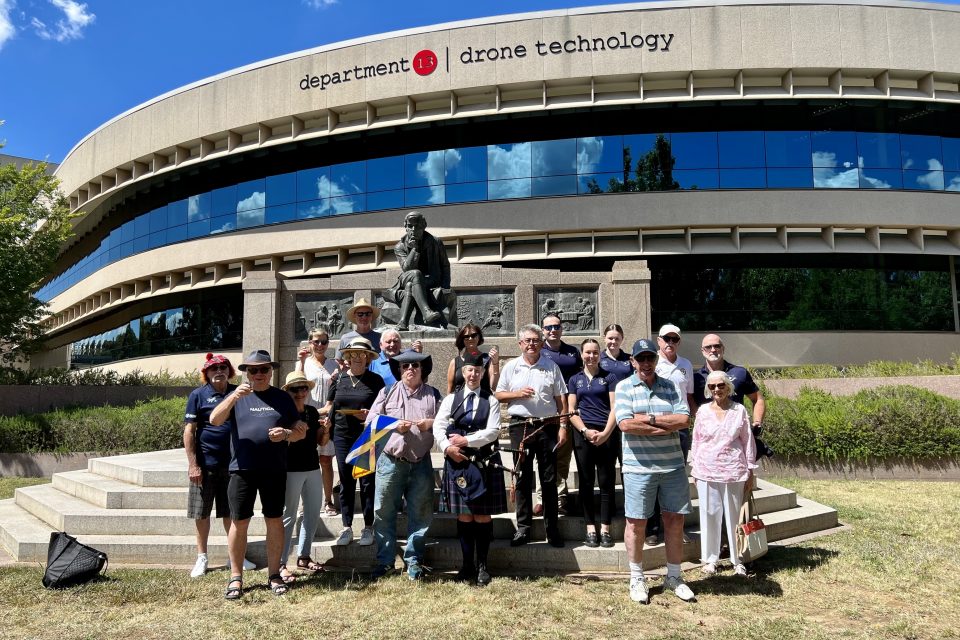
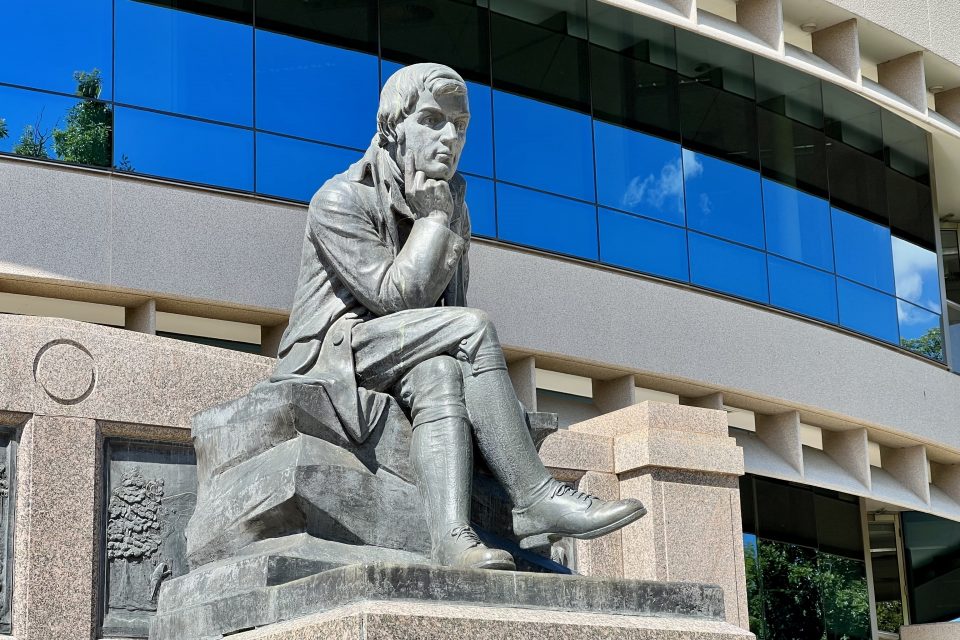

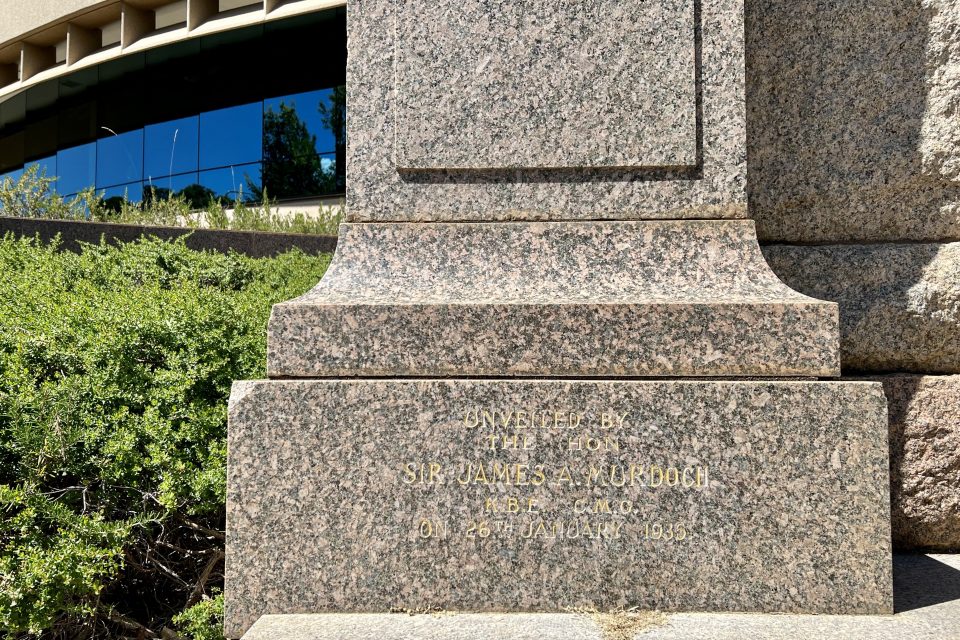
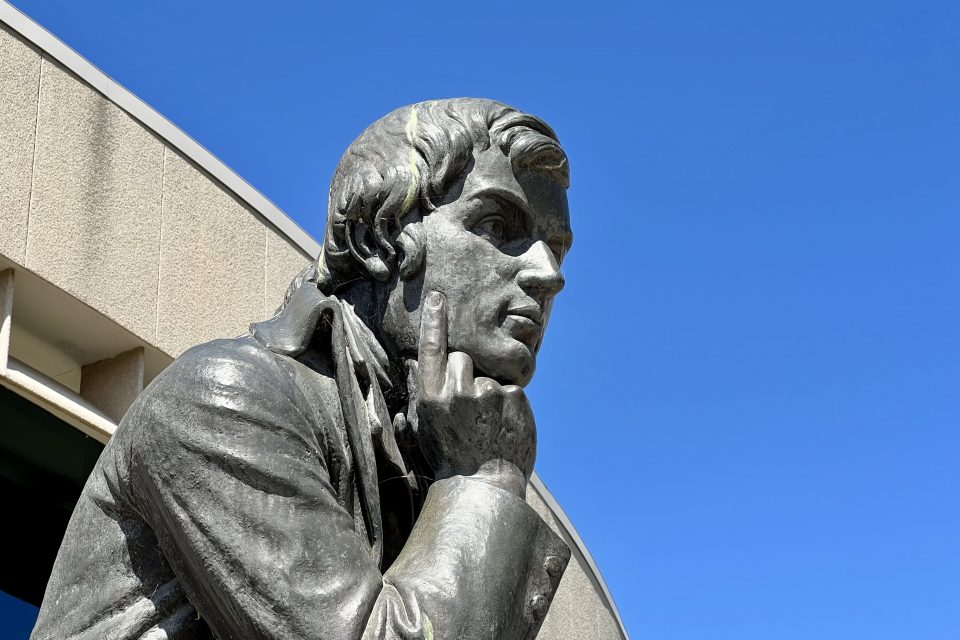
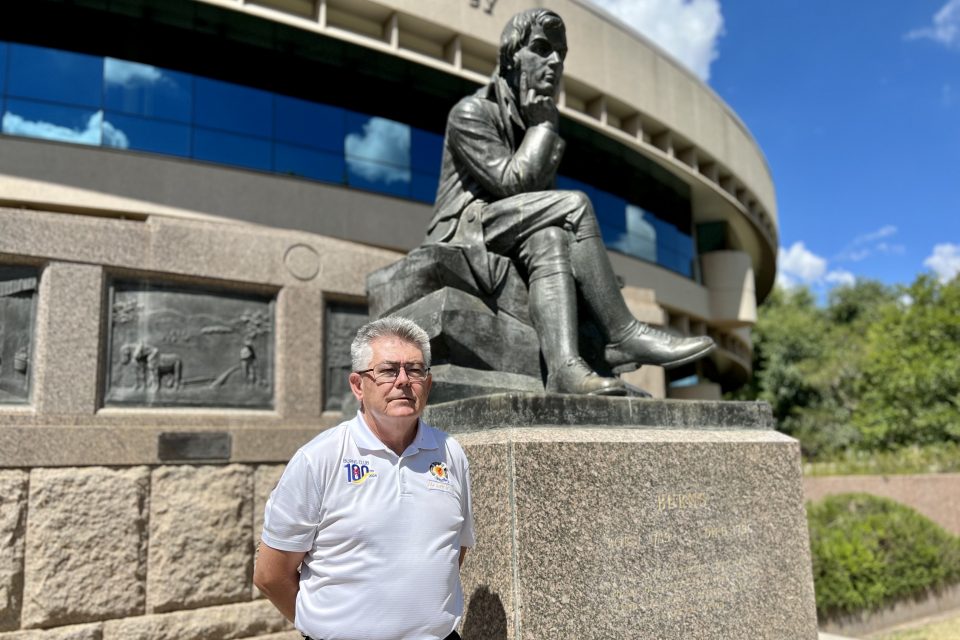
Having been piped into position, Burns Club president Athol Chalmers ascends the granite steps to make his speech. Born in Australia, but with parents from Scotland, he’s been involved with the club since he started in the pipe band nearly two decades ago. He starts by comparing today’s double-digit crowd to when the statue was unveiled on 26 January 1935, by then Prime Minister Joseph Lyons.
“There were thousands of people from all over Australia at the ceremony, including those who boarded trains in Sydney at midnight to make it, and they all adjourned to Albert Hall for ‘Burns Night’ to hear some of his poems read and songs sung,” he says.
But the story really begins much earlier.
In addition to today’s all-you-can-eat Star Buffet, the Burns Club has another claim to fame – that of Canberra’s first and longest-serving club. Formed in October 1924, Athol says they’re preparing to celebrate their centenary next year.
“We’ve been here for most of Canberra’s existence.”
At the time, the city’s population numbered a fledgling 3000 and around 1400 were involved in construction projects. Many of those 1400 were Scots who wanted a place to share jokes, ‘refreshments’ and a love for strange wind instruments.
Within three years, the new Burns Club set about plans to add a Robert Burns statue to the cityscape. Over the next decade, the club led an Australia-wide fundraising program to raise today’s equivalent of $300,000 for the design and construction.
In 1957, with that done and dusted, they then funded and built their own facility immediately behind the sculpture, where the round brutalist-style Burns Centre office building now stands today. There they stayed until moving to their current Kambah spot in 1991.
Athol concludes by describing Robbie as a poet of the people, which is appropriate for the capital of a democratic nation.
“If you read his poems today, he’s just as relevant as he was back then.”
The Burns Club tries to hold a Burns Night on the Saturday closest to the bard’s birthday, but with Australia Day falling where it did this year, staff chose 4 February as the night to hold the “great celebration”. Think more songs, bagpipes and, yes, whisky.












